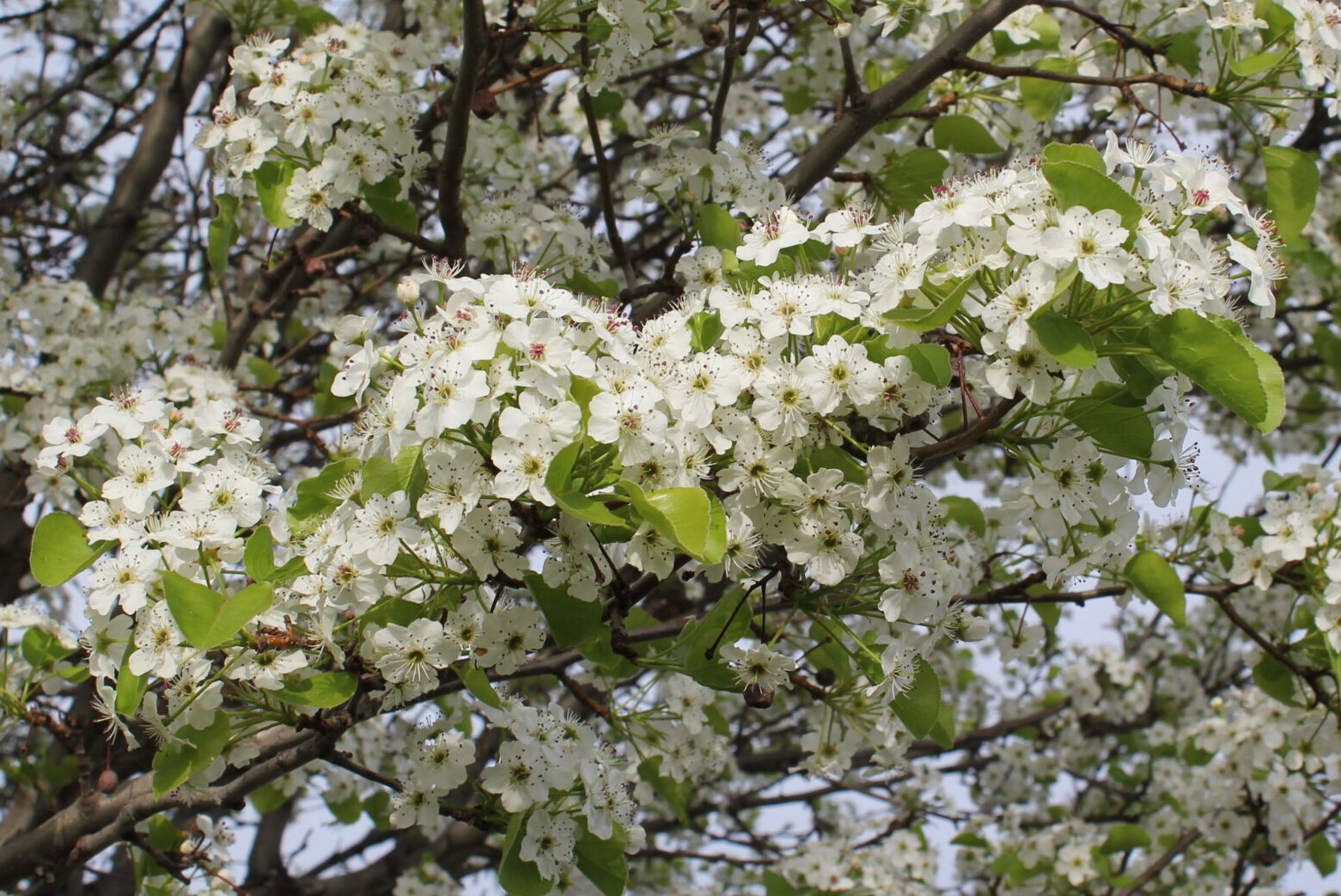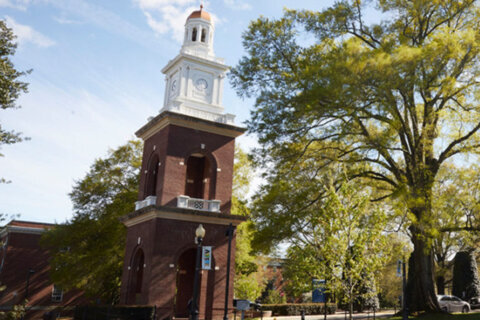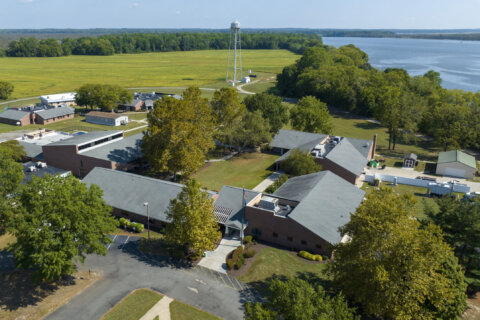The once-popular Callery pear is blooming in suburbs across Virginia and throughout much of the eastern and midwestern U.S.
The Callery pear, also known as the Bradford pear, is an ornamental tree that was imported to the U.S. in the early 1900s from China and Vietnam.
“We imported it because it’s a beautiful tree, aesthetically. It has dark green leaves. Right now, in springtime, white flowers are prolific and everywhere, and they’ve got really pretty fall color, as well,” says Lou Meyer, arborist with Davey tree services.
So, what’s the problem?
“What we realize now is that they’re an invasive species,” Meyer said.
The Callery pear’s inedible fruits outcompete native fruits to reseed and sprout, Meyer said.
“They leaf-out before most of our native species of trees do, so our seeds that are starting to come out of the ground are shaded-out by the pear, because (the Callery pear’s) leaves come out first,” he said.
In addition, because of their quick-growing nature and genetic makeup, Meyer said the Callery pear is prone to snapping, which makes them a liability.
“A lot of times they have leaves on them when the first snow hits, and they just fall apart,” Meyer said. “In neighborhoods that have the Callery pears, in early snowstorms you’ll just see limbs down, up and down the street, because these things just fall apart.”
And they don’t smell great: “It’s an unpleasant smell. Reminds me of cat urine, so kind of ammonia. Yeah, it’s off-putting,” Meyer said.

Virginia to trade invasive pear tree for native tree
This year, the Callery pear has joined the Virginia Department of Conservation and Recreation’s list of invasive plants.
The Virginia Department of Forestry Callery Pear Exchange Program encourages the removal of the invasive trees by providing Virginia landowners with a replacement native tree to plant.
Demand has outstripped supply at the moment, Meyer said, ahead of the program’s scheduled exchange date on April 20.
After pre-registering, participants hire an arborist to remove the invasive tree. Then bring a photo of the removed tree down to Charlottesville when picking up your replacement tree.
“They give you a two-gallon bucket with a native species tree,” he said. “They’ve got a variety of species, and you can get a one-for-one trade, up to three trees.”
While the event is at capacity, you can find directions on how to be added to the waitlist by clicking to preregister on the department’s website.
While free replacements may not be available, Meyer said local nurseries sell many native options for purchase for a medium-sized tree that could be planted in a smaller area where a giant oak or sycamore would be overwhelming.
“Serviceberry is one of my favorites,” Meyer said. “It grows 15 to 20 feet tall, with beautiful spring flowers.”
Those flowers are blooming in Virginia.
“I saw one yesterday that was spectacular,” he said.
Another choice is the Eastern redbud.
“It has the purple flowers,” Meyer said. “In Virginia they’re actually popping right now. Great blooms — they’re purple flowers that grow on the trunks of the trees, on the stems.”
Get breaking news and daily headlines delivered to your email inbox by signing up here.
© 2024 WTOP. All Rights Reserved. This website is not intended for users located within the European Economic Area.








